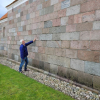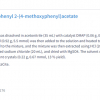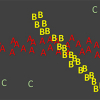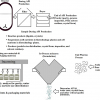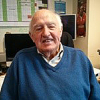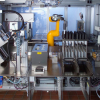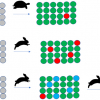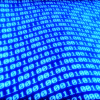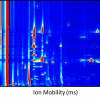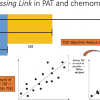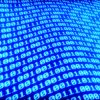Articles
In this issue, you will also learn something of the history of Danish medieval stone churches in northern and western Jutland! “Danish geology icon Arne Noe-Nygaard picks up on an 800 years old sampling and invents the Replication Experiment: PAT in disguise” is firmly rooted in the Theory of Sampling but you will also learn some geology and history!
Tony considers the “Life and death of a data set: a forensic investigation”. Over time, spectral data will become increasingly fragmented and lose important supporting information. Computer and software upgrades, and processing in chemometric programs can all cause this. Of course, the answer is to follow FAIR principles and ensure that they are implemented in the analytical laboratory.
Tony Davies has started a timeline of significant spectroscopic system developments aligned with Queen Elizabeth’s reign as recently celebrated in her Platinum Jubilee. Jumping from Princess Anne the Princess Royal’s birth to Heinrich Kaiser certainly makes for a novel approach! Tony hopes that we can turn this into an online resource with your help.
This column starts to answer the question, “how does one actually find FAIR data?” with a detailed example from Imperial College London.
Tony Davies marks the passing of Svante Wold, who gave us “chemometrics”. It all started with a grant application!
Tony Davies has discovered there is a new UK National Data Strategy and that it is on the right lines: echoing many of his suggestions in this column over many years.
COLID is a Finding Aid, essentially a “catalogue of catalogues” collating any data source with which it is connected. It collects and provides metadata about basically any resource that you want to incorporate, links endpoints, such as spectra, in a repository or details in a chemicals database, and links it all semantically with any other related resource.
Following on from a recent column that reported on work which had shown that weight fractions were often incorrect concentration units to use in quantitative chemometric studies, Howard Mark goes into more detail.
Peter McIntyre and Tony Davies remember Bill George, a real Welsh character and educator whose style and charisma influenced many to go on and not only stay in science but to rise to leading positions either in industry or academia.
In quantitative analysis, is it better to weigh materials when making up standard solutions or to use volumetric techniques? Traditionally, the answer has been “volume”, however, things may not be as straightforward as they seem. Henk-Jan and colleagues have conducted a new experiment, using robots for both sample preparation and spectroscopic analysis which may provide a definitive answer. Unfortunately, the answer must wait for publication of their paper, but Tony and Henk-Jan’s history of this question makes interesting reading nevertheless.
Whilst automation is not a panacea, it can improve the accuracy of manual tasks as well as freeing up our time for more challenging tasks. The authors explore some particular examples they have come across and lessons learned from them.
Tony Davies and Mohan Cashyap discuss this topic with help from a number of industry experts. Whilst there are undoubted computing and networking issues for regulated industries in allowing working from home as if the user was in the lab, they are not insurmountable.
David is concerned about the “Importance of citing full details of spectral library and search program” in papers. As he points out, “even when the same mass spectrum is searched against two different versions of the NIST/EPA/NIH EI Mass Spectral Library using the same search program, two different compounds can be found as the first Hit”. There are many possible reasons for this, but the version of the spectral library used and the particular search program used make a difference, and should be included in all references.
With a significant proportion of our regular readership probably under home lock-down, we were wondering if we could help you at this difficult time by pointing out some useful online resources. So, when we finally come out of this pandemic, you could do so better skilled and more up-to-date than when we went in to it.
The authors offer many useful points to consider when using pre-processing techniques.
The Sampling Column points out that incorrect sampling is irreversible: no amount of chemometrics or further samples will be able to produce a valid model if the sampling is not representative. This applies in flowing PAT analyses as much as in static.
Tony Davies, Peter Lampen and Robert Lancashire are worried about their metadata, or perhaps the lack of it. With the explosion of data and ways to mine and make use of it, having accurate and appropriate metadata about analytical data sets is vital if they are to be reused efficiently or at all. This is also an area that is being increasingly targeted by regulators, with the US FDA issuing guidance at the end of 2018; others will follow. You have been warned.
Spectroscopy is widely used in forensics, but the determination of the age of documents was one application I had not considered. With a huge variety of papers and inks available, each with their own ageing profiles, and with such ageing depending on environmental factors, the determination of the age of a document is not straightforward. However, infrared spectroscopy and chemometrics may have the answer.
FAIR, which stands for Findable, Accessible, Interoperable, Reusable, is an essential framework for the future of analytical data. Tony has taken the opportunity of a recent conference in Amsterdam to update readers on FAIR and how it affects spectroscopic data.
Tony Davies continues his quest to find out what you all need to work more efficiently. You will remember that in the last issue, Tony introduced his survey to discover what developments were needed in spectroscopy by readers. Some of the initial responses are explored, and Tony finds that he has opened a “can of worms”.

